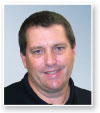
 Jeffrey D. Brauer | The U.S. Open, played this year at the nearly treeless Chambers Bay and is slated for the similarly “tree challenged” Erin Hills in Wisconsin in 2017. Next year, it returns to the course that made those venues possible – Oakmont. The course last hosted in 2007, shortly after undergoning a well-regarded tree removal program. It changed some thinking at the USGA, which had famously favored heavily wooded and very narrow U.S. Open courses. The 2007 U.S. Open popularized tree removal, much like the 2000 U.S. Open at Pebble Beach started a trend toward more fairway chipping areas around greens to provide a variety of recovery shots over pure difficulty. Such is the influence of major televised tournaments. While there have been some successful tree removal programs at educated and enlightened clubs, at most courses, tree reductions remain a hard sell. And, most love trees, so leading off with “tree removal” puts many on the defensive. For starters, any proposal calling for “long-term tree management” is more popular. With general agreement that your tree assets are valuable and should be maximized, the next logical step is to have an arborist create a tree inventory, including number, age, size, species and condition. His survey should be supplemented by observations and recommendations from the superintendent, the USGA (or other) agronomist and a golf course architect. When (and if) it comes time to report findings and make recommendations, you can still expect resistance, and three reasons to remove a tree are stronger than just one. When asked for tips on “selling” tree removal programs, I usually agree selling is what is necessary. As an architect, I long ago (and reluctantly) concluded that “architectural merit” doesn’t convince them as well as more tangible and direct benefits. These may include agronomic reasons, couched in terms of a better playing experience over ease of maintenance by the superintendent. Score enhancement, aesthetic or playability reasons can also sell in smaller doses. Here are some of the most compelling reasons for any specific tree removals: 1.They allow for more sunlight and air circulation, and less root competition, resulting in better grass coverage. I use sun angle charts (easily found on the Internet) to show shade conditions in usually critical low spring, fall and (in the south) winter sun. But, the sales pitch is reducing early morning frost delays and lost tee times in spring and fall, when getting in the year’s first and last rounds. 2. And, safety, highlighted by the famous Sergio Garcia “root shot” at Medinah in the 1999 PGA. 3. Addressing environmental issues, tree removal might improve:
4. Addressing maintenance cost, tree removals are likely to impact:
5. Concerned with course history, examine earlier tree planting closely:
If your course is typical, many trees were selected for low cost or quick growth, then located without much detailed and long-term thought as to eventual size. But, times change, and with that mission long ago accomplished, and other trees in the mix, can we ask if it’s time to remove them? 6. Of course, the ultimate direct benefit is how trees affect golfers’ individual games, and scoring, in general or on specific holes. While many object to the general idea of tree removal, everyone probably has a few select holes where tree removal would help them. You can ask:
7. For those concerned with making the course too easy:
Certainly, trees are both beautiful and necessary – in the right spots – on most golf courses and any tree removals deserve careful consideration. While tree removal is a sensitive subject, there are many good reasons to pursue it. If desired or necessary at your course, as with most renovations and improvements, the plan will usually only pass if influential members support it and a compelling case is made. Achieving approval is typically “all in the presentation.” Jeffrey D. Brauer is a veteran golf course architect responsible for more than 50 new courses and more than 100 renovations. A member and past president of the American Society of Golf Course Architects, he is president of Jeffrey D. Brauer/GolfScapes in Arlington, Texas. Reach him at jeff@jeffreydbrauer.com. |

Explore the October 2015 Issue
Check out more from this issue and find your next story to read.
Latest from Golf Course Industry
- Audubon International announces newest leadership appointees
- Southern golf trifecta
- Sports for Nature Framework gains new signatories
- Camiral Golf & Wellness upgrades Stadium Course
- Troon selected to manage The University Club of Milwaukee
- Kafka Granite adds new business development manager
- GCSAA celebrates 10-year anniversary of collaboration with Congress
- DLF launches new seed enhancement solution





